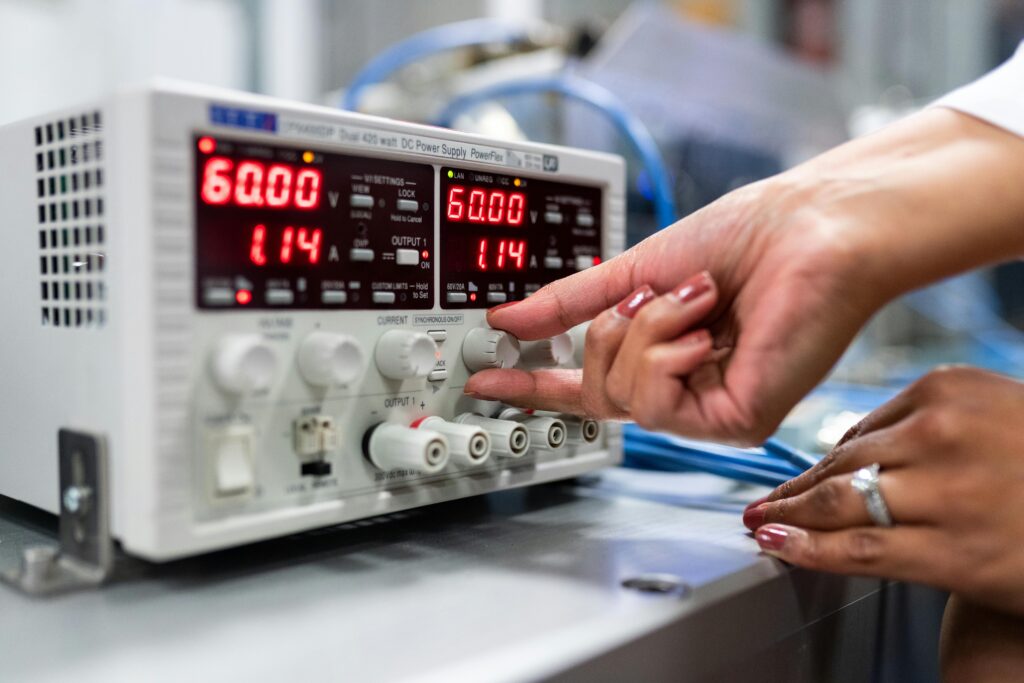Part 1: Mastering Agarose Gel Electrophoresis
Key Factors for Visualising and Quantifying DNA and RNA
By Gene Vantage – 27 August 2024
Agarose gel electrophoresis is a cornerstone technique in molecular biology, providing a simple yet powerful method for visualising and quantifying DNA and RNA. However, the accuracy and clarity of your results hinge on several critical factors. In this blog post, we’ll dive deep into these factors, offering insights into optimising your agarose gel runs and troubleshooting common issues.

1. Choosing the Right Concentration of Agarose
Agarose concentration is a key determinant of the gel’s pore size, which directly influences the resolution of nucleic acid fragments. Lower concentrations (0.7-1.0%) are suitable for larger DNA fragments (1-20 kb) because they create larger pores, allowing larger molecules to migrate more easily. Conversely, higher concentrations (1.5-2.0%) create smaller pores, which are better suited for separating smaller DNA fragments (100-1000 bp).
If you are unsure about the fragment sizes in your sample, you might start with a 1% agarose gel as a general-purpose option. For very small fragments, such as those below 100 bp, consider using an alternative gel matrix, like polyacrylamide.
If your gel fails to resolve the bands distinctly, try running a range of concentrations (e.g., 0.8%, 1.0%, 1.5%) to determine the optimal concentration for your specific application. If bands are too close together or seem to merge, reduce the concentration; if they run off the gel or are not well separated, increase it.
2. Selecting the Manufacturer and Type of Agarose
Not all agarose is created equal. The electroendosmosis (EEO) value of agarose, which refers to the movement of water molecules and ions through the gel matrix, can vary depending on the manufacturer. Low EEO agarose is typically preferred for DNA and RNA electrophoresis because it reduces band distortion and smearing. High EEO agarose might be more appropriate for other applications, such as protein electrophoresis.
If you regularly experience issues with band clarity, consider switching to a low EEO agarose or a brand with consistent quality control. It might also be beneficial to choose an agarose type optimised for specific applications, like low-melting agarose for gel extraction procedures.
If band migration appears irregular or there is excessive band smearing, it might be related to the agarose quality. Testing the agarose with a standard sample can help determine if the problem is due to the agarose or another factor.
3. Maintaining Fresh Tank Buffer
The tank buffer serves several critical functions: it maintains the pH, provides ions for current conduction, and prevents overheating during electrophoresis. Commonly used buffers include TAE (Tris-acetate-EDTA) and TBE (Tris-borate-EDTA). TAE is less ionic than TBE, resulting in slower migration and is more suitable for downstream applications like DNA extraction or cloning. TBE, with its higher ionic strength, provides sharper resolution for small DNA fragments and is preferred for long or high-resolution runs.
Always prepare a fresh buffer and use the same buffer in both the gel and the electrophoresis tank to ensure consistent ion strength. If running multiple gels, replace the buffer regularly to prevent pH changes.
If you notice band smearing, unexpected migration, or low resolution, the buffer may be old or too concentrated/diluted. Replace the buffer with a fresh batch and ensure the correct dilution from the stock solution.
4. Optimising Current and Voltage
The voltage applied during electrophoresis drives the migration of nucleic acids through the gel. Higher voltages can speed up the process, but they also generate heat, which can cause gel melting and band smearing, especially in thicker gels or gels with higher agarose concentrations. Lower voltages, while safer, may lead to diffusion of the DNA bands, resulting in a loss of sharpness.
Start with a voltage of 4-10 V/cm of gel length as a general guideline. Monitor the gel during the run for signs of overheating (e.g., visible heat waves or buffer evaporation).
If bands are smeared, lower the voltage and extend the run time. If bands are diffused or not well-resolved, increase the voltage slightly, ensuring the gel does not overheat.

Agarose gel electrophoresis is a highly reliable technique when all factors are carefully controlled. By understanding how each aspect—from agarose concentration to the choice of staining agent—impacts the outcome, you can achieve consistent and clear results. Always be vigilant for potential errors and be prepared to troubleshoot issues based on the symptoms observed. By applying these guidelines, you can master the art of nucleic acid separation, ensuring that your DNA and RNA visualisation and quantification are both accurate and reproducible.
Join back again next week for more tips on mastering agarose gel electrophoresis.
Reference:
Addgene: Protocol – How to Run an Agarose Gel
https://www.addgene.org/protocols/gel-electrophoresis
Images from: https://www.pexels.com/search/laboratory/
